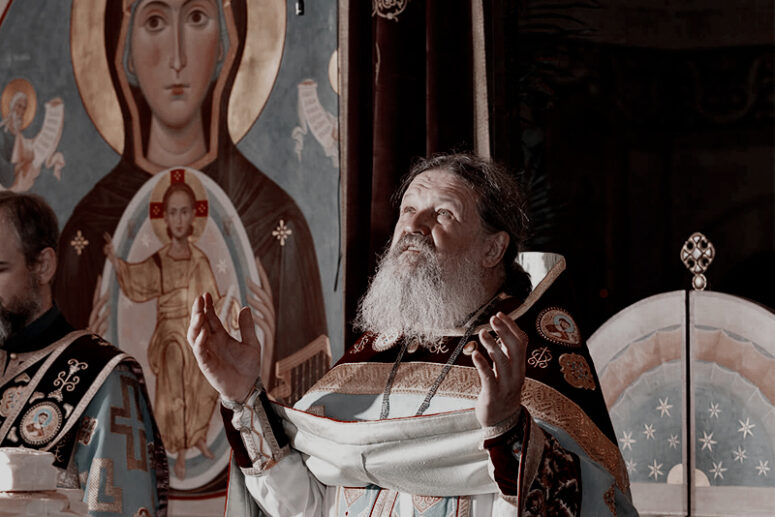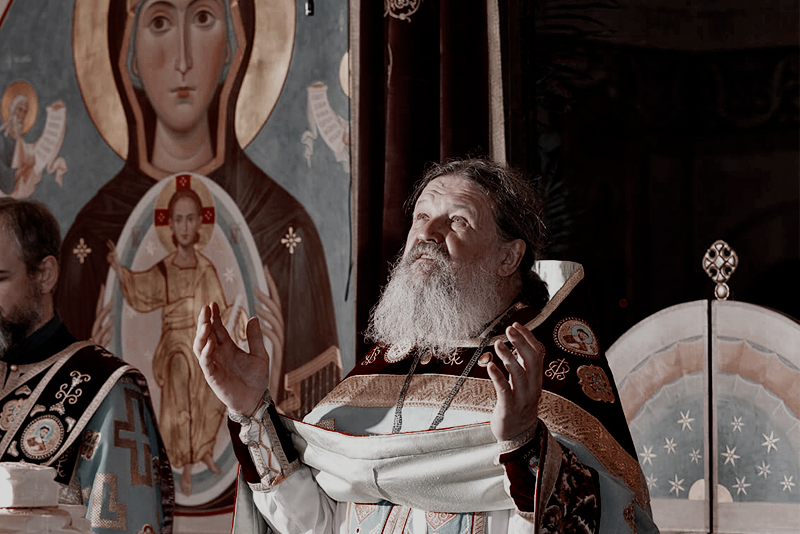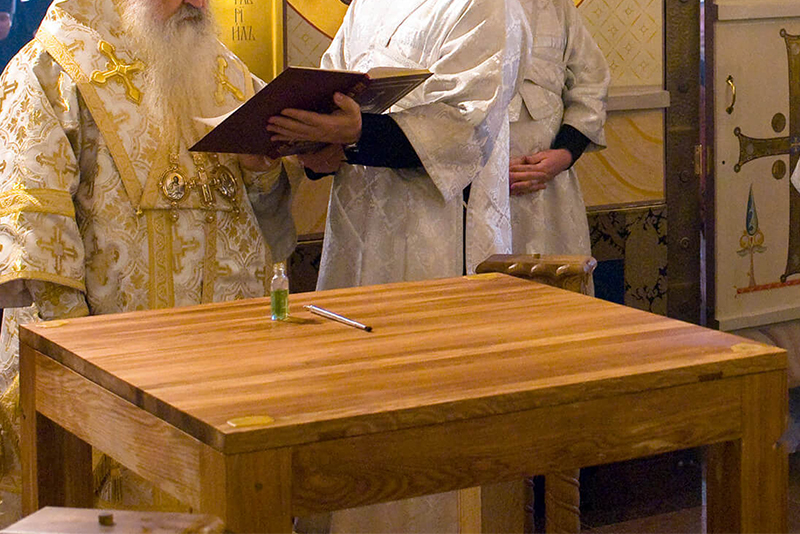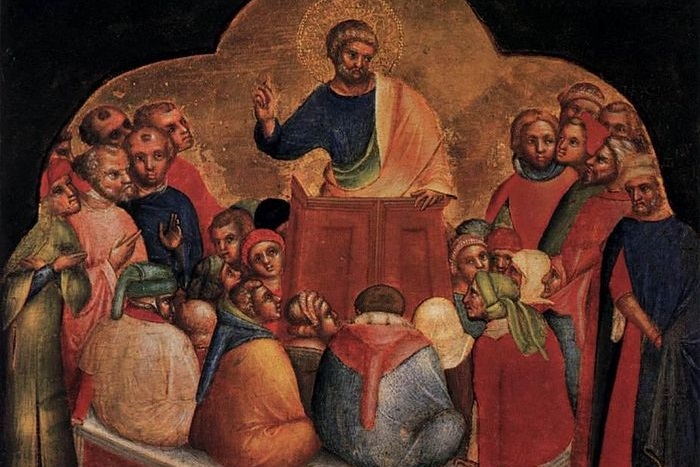
Сatapetasma Prayer
Cherubic Hymn is among many believers’ favorite chants of the Orthodox liturgy. Some even tend to consider that moment to be the most prayerful and spiritually intense in the entire service. These minutes are no less important to the ministering priest. He, however, is reading a completely different prayer at that point, namely the prayer “No one is worthy,” in ancient times called the Prayer of the Catapetasma. In the middle of the 12th century, this prayer caused fierce disputes resulting in two Сouncils. What were the questions discussed then? Why is this prayer important to Orthodox theology?
No one bound by carnal desires and pleasures is worthy to approach, draw near, or minister to You, the King of Glory. For to serve You is great and awesome even for the heavenly powers. Yet, because of Your ineffable and immeasurable love for mankind, You impassibly and immutably became man. You, as the Master of all, became our high priest and delivered unto us the sacred service of this liturgical sacrifice without the shedding of blood. Indeed, Lord our God, You alone reign over the celestial and the terrestrial; borne aloft on the cherubic throne, Lord of the Seraphim and King of Israel, the only holy and resting among the holy ones. I now beseech You, Who alone are good and inclined to hear: Look down upon me, Your sinful and unprofitable servant, and cleanse my soul and heart of a wicked conscience; and enable me, by the power of Your Holy Spirit, clothed with the grace of the priesthood, to stand before Your holy Table and celebrate the Mystery of Your holy and pure Body and Your precious Blood. I come before You with my head bowed, and I implore You: Turn not Your face away from me, nor reject me from among Your children, but make me, Your sinful and unworthy servant, worthy to offer these gifts to You. For You are the One Who both offers and is offered, the One Who is received and is distributed, O Christ our God, and to You we offer up glory, with Your Father, Who is without beginning, and Your all-holy and good and life-creating Spirit, now and forever and to the ages of ages. Amen.
Dividing Christ?
The theological ferment present in the middle of the 12th century was caused by the ending of the prayer: “…For You are the One Who both offers and is offered, the One Who is received and is distributed, O Christ our God, and to You we offer up glory…”. The famous teachers and theologians of that time, Michail from Thessalonika and Nikephoros Basilakes, spoke out against Deacon Basil, who preached that the Son of God is both the Sacrifice Itself and the One who accepts the Sacrifice together with the Father. The two scientists have concluded that the deacon was introducing two Hypostases into Christ, “after all, to offer a sacrifice means one thing, and to accept it is another.” Soon, the disputes became widespread, and a number of hierarchs, including the candidate for the Throne of Antioch, Deacon Sotirichos Panteгgenos, joined the opinion of Michail and Nikephoros. At the initiative of the newly elected Metropolitan of Kiev Constantine, the Council of Constantinople was convened in 1156. It was attended by 24 bishops and a number of learned scholars holding high imperial posts. The Russian Metropolitan did not want to go to his distant flock, not having learned the Council’s decision in regards to the argued words of the prayer.
The Sacrifice, the Priest, and the Lord
During the Council meeting, numerous pronouncements of the Holy Fathers were made in favor of the statement that Christ is both the Sacrifice and the One Who brings and accepts the Sacrifice. St. Cyril of Alexandria, for example, wrote that Jesus “Himself is the Priest and the Sacrifice, the One Who both offers and is offered, the One Who is received and is distributed” remaining at the same time the God-Man, not divided into two Persons (PG. 140. Col. 137-202). St Cyril of Jerusalem echoes him: “He Himself is the Gifts, Himself – the Bishop, Himself – the Altar, Himself – the Purification. Himself – the Bringer and the Offering of a Sacrifice for the world. He Himself is a living fire and the burnt offering. Himself – the tree of life and knowledge, Himself – the sword of the Spirit, Himself – the Shepherd, Himself – the Angel, Himself – the Priest, Himself – the Law and the Fulfilment of the Law” (from the address on the Presentation of the Lord).
The testimony of the Fathers and the liturgical practice convinced the doubting hierarchs. A simioma (a summary of the Council meeting and its decisions) was published, based on the profession of the Kiev Metropolitan Constantine: “From the very beginning when the life-giving sacrifice was brought by Christ the Savior even to the present day, it is still offered not only to the Unoriginate Father, but to the Incarnate Word Himself. In the same way, the Holy Spirit also cannot be deprived of this godly honor. Everywhere the offering of the Mysteries has taken or is taking place, it is to the One Triune Deity” (Spicilegium Romanum). However, the Council did not manage to calm all the restless minds. The controversy intensified even more, and only the following Council of 1157 in the presence of the emperor finally overcame all the differences by developing several anathemas that were included in the Synodicus, read for centuries during the Triumph of Orthodoxy Week .
The Orthodox answer
The 1157 Council is also remarkable in the context of theological dialogue with other Christian traditions, in particular the Catholic and Protestant ones. Thus, the Council of Trent (1545-1563), attributed by Catholics as the Ecumenical, following the legal theory of atonement, confirmed the assertion prevailing in the Latin West that the Sacrifice of Christ was brought to God the Father: “Through His Most Holy Suffering on the tree of the cross, he gave us forgiveness and satisfaction for us to God the Father” (Sessio VI, 5, 7). However, we see that the Councils in Constantinople as early as 1156-57 condemned such a view since the Eastern Fathers were closer to the theological idea of the Sacrifice offered to the entire Holy Trinity.
Another interesting fact of theological controversy around the Catapetasma Prayer was the assertion of the third anathematism of the 1157 Council. The Fathers condemned those who believe that the Memorial of the Last Supper, celebrated at the Liturgy, only dreamily and figuratively renews the Calvary Sacrifice, without introducing us to the very Sacrifice of Christ, His Body, and Blood. As you can see, the Council forestalled and condemned the provisions that began to take root in Protestant circles centuries later.
This is how one ministerial prayer became the cause of bitter disputes, resulted in the convention of two Councils, and caused Deacon Sotirichos Panteгgenos’s failure to become Patriarch of Antioch costing him his rank. On top of that, it served as an impetus to the development of Orthodox theology.




